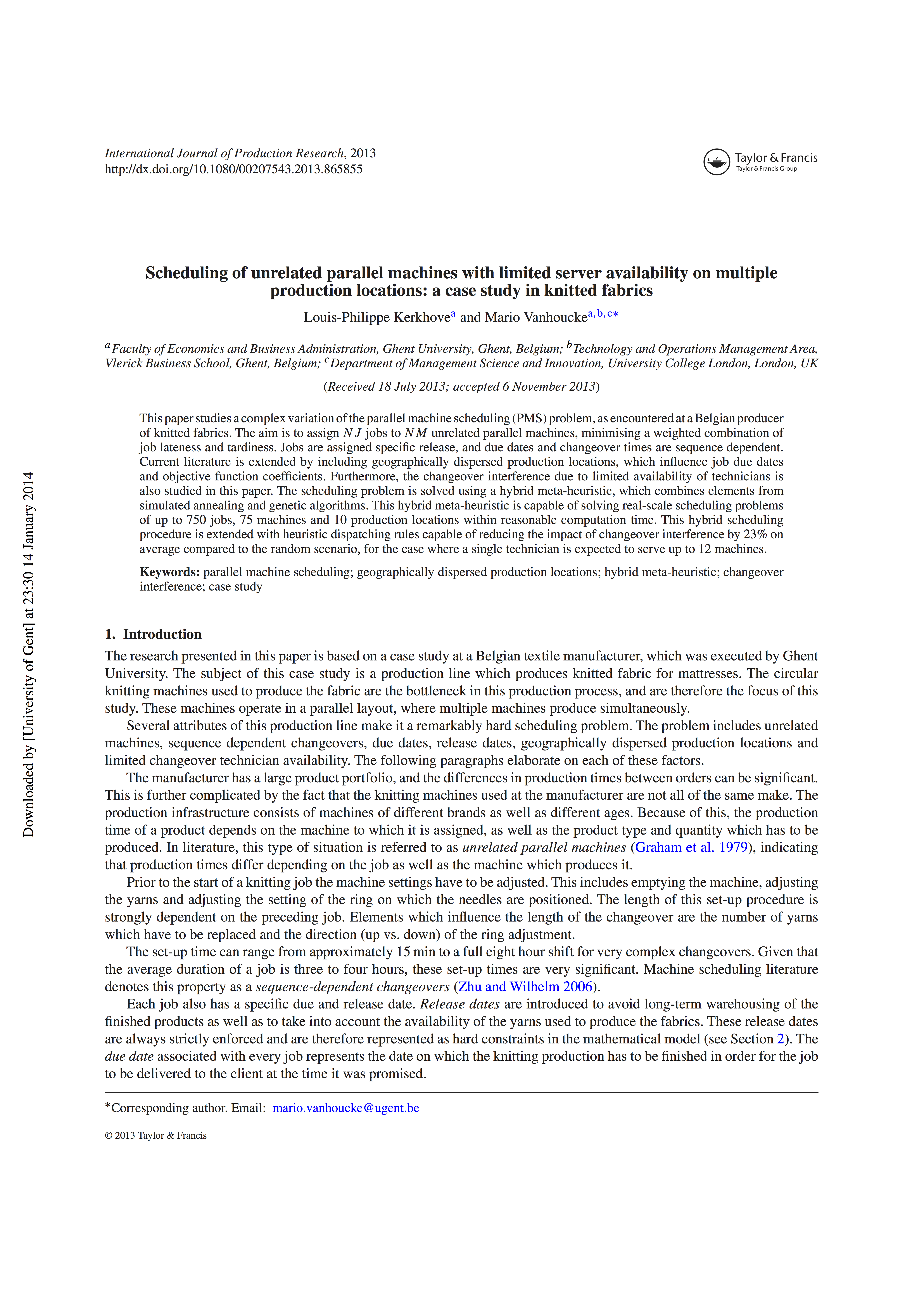Operations Research for knitted fabrics
Using heuristics for machine scheduling - A Belgian case study
The Concerted Research Action (CRA) project is a big research funding that allows the OR&S group to hire young researchers aiming at carrying out high-quality research to be published in flagship academic journals. Today, at the dawn of 2014, less than two years after the start of the CRA, we are proud to announce that a first publication on the use of Operations Research techniques has been recently published. The paper makes use of a combination of metaheuristic techniques to solve a complex set of machine scheduling problems. The paper is entitled "Scheduling of unrelated parallel machines with limited server availability on multiple production locations: a case study in knitted fabrics", written by Louis-Philippe Kerkhove and Mario Vanhoucke and published in the International Journal of Production Research.
The abstract of the paper is as follows:
"This paper studies a complex variation of the parallel machine scheduling (PMS) problem, as encountered at a Belgian producer of knitted fabrics. The aim is to assign jobs to unrelated parallel machines, minimising a weighted combination of job lateness and tardiness. Jobs are assigned specific release, and due dates and changeover times are sequence dependent. Current literature is extended by including geographically dispersed production locations, which influence job due dates and objective function coefficients. Furthermore, the changeover interference due to limited availability of technicians is also studied in this paper. The scheduling problem is solved using a hybrid meta-heuristic, which combines elements from simulated annealing and genetic algorithms. This hybrid meta-heuristic is capable of solving real-scale scheduling problems of up to 750 jobs, 75 machines and 10 production locations within reasonable computation time. This hybrid scheduling procedure is extended with heuristic dispatching rules capable of reducing the impact of changeover interference by 23% on average compared to the random scenario, for the case where a single technician is expected to serve up to 12 machines."
Click on the picture below to visit the website of our recent publication. And keep following our blog, since we expect more publications to come!
Front cover of publication
(click to visit website)

